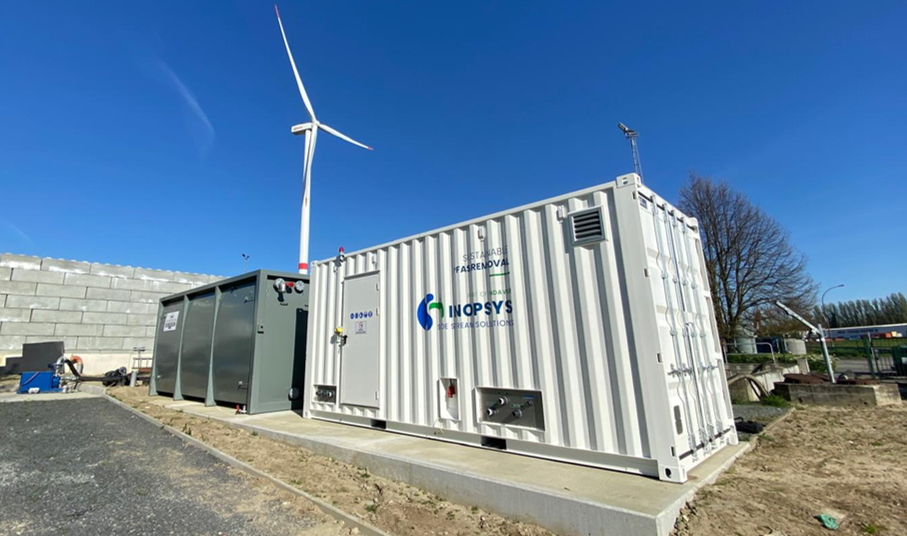
Cleaning waste treatment effluent
A waste treatment facility needed to remove PFAS from its effluent prior to discharge into the municipal wastewater treatment plant (WWTP). One of the main challenges was the effluent’s high levels of salts and COD (> 4000 mg/L).
Through lab trials, Inopsys identified the most effective treatment train for PFAS removal. Following the fit-for-purpose principle, only total suspended solids (TSS) were targeted in the pretreatment stage, while chemical oxygen demand (COD) was left untreated at this stage, as it is managed downstream by the municipal WWTP. This selective approach optimized both cost and operational efficiency.
Given the high COD levels in the stream, ion-exchange resins (IEX) were chosen over granular activated carbon (GAC) for PFAS removal, as GAC would have resulted in significantly higher costs for this wastewater stream.
Since April 2025, Inopsys’ fully automated containerized unit has reliably removed all PFAS to below detection limits (<20 ng/L), despite the effluent’s complex composition.
Our solution is compared to standard GAC
![]() HIGHER IN ADSORPTION CAPACITY
HIGHER IN ADSORPTION CAPACITY
![]() BETTER TO REMOVE OF LONG AND SHORT CHAIN PFAS
BETTER TO REMOVE OF LONG AND SHORT CHAIN PFAS
![]()
MORE COMPACT INSTALLATION, WITH LIMITED FOOTPRINT
![]() MORE SUSTAINABLE, DUE TO REGENERATION OF ADSORBENT
MORE SUSTAINABLE, DUE TO REGENERATION OF ADSORBENT
![]() HAS A LOW TOTAL LIFE CYCLE COST
HAS A LOW TOTAL LIFE CYCLE COST
![]() COMBINES OTHER TECHNOLOGIES TO BE ABLE TO RECUPERATE WATER
COMBINES OTHER TECHNOLOGIES TO BE ABLE TO RECUPERATE WATER
